After using a Behavior Clip Chart for one semester, I quickly learned that color systems and clip charts are NOT for me. I also don’t think they’re good for children or effective in improving behavior.
In my post, I Ditched My Clip Chart, and Here’s What Happened, I shared my experience with that so-called behavior management tool. In this post, I want to offer 5 alternatives to the Clip Chart that actually lead to the outcomes I want for my classroom and my students.
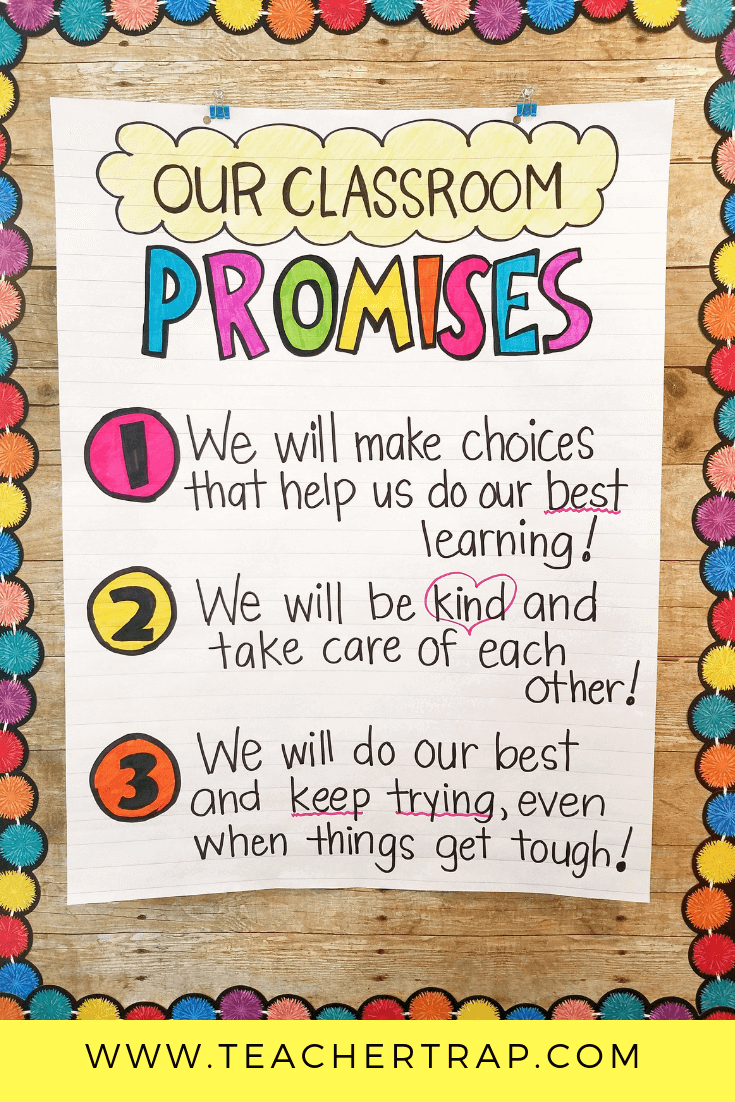
Before I share the strategies, I want to talk about the foundation of my classroom management. My students and I begin the year by brainstorming ideas for how we want our class to be. Those ideas become our Classroom Promises. Instead of rules, I use these shared agreements as my classroom expectations. They guide everything we do!
The Classroom Promises take the place of rules. The strategies I share below take the place of behavior management systems such as the Behavior Clip chart.
Behavior Reflections
One of the most powerful methods I’ve found to improve student behavior is using behavior reflections. I incorporate behavior reflections throughout the school day, both when things are going well and when they aren’t.
The beauty of using reflections is that students become more aware of their behavior and can actually learn to make better decisions.
Thumbs-Up/Thumbs-Down Reflections
I use a quick thumbs-up/thumbs-down reflection after most parts of our school day. Students simply hold their hand in front of their chest and respond to my statements with a thumbs-up (for ‘YES, I did it!’), thumbs-halfway (for ‘Kinda did it’), or thumbs-down (‘I need to work on it’).
For example, after independent writing time, I might read through our expectations while students reflect with their thumbs…
I picked a smart spot to write.
I wrote the whole time.
I stayed focused on my writing.
I reread and fixed up my writing.
Students show how they did with a thumbs up/thumbs down, and then we talk for a moment about how things went. Even though there is no reward or consequence tied to the outcome, the act of reflecting helps students notice their actions and make improvements. I’ve used this strategy with K-5 and always seen awesome outcomes.
Written or Oral Reflections
I have my students reflect on their behavior and choices often. Sometimes they talk with a partner, other times we might talk as a whole class. We do weekly reflections on Fridays, and sometimes I’ll have students write individual reflections about a certain issue.
Speaking and writing about their choices give students time to think through what happened, including what went well and what could have gone better.
Class Goal-Setting
Setting goals with children helps them learn to think ahead, work toward success, and work together. When a certain classroom issue is becoming problem, I meet with the students to set a goal and create a plan for success.
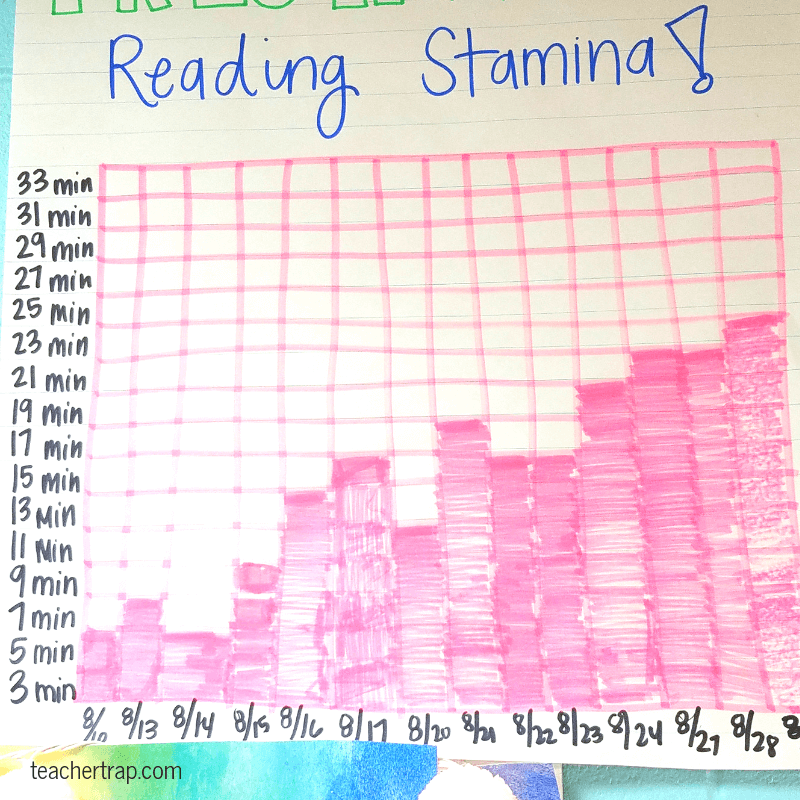
The goals can range from small issues to big ones. For example, at the beginning of the school year, we set a stamina goal and work together to increase the amount of time the entire class can stay focused on their independent reading. At some point, we usually have to work on “blurts” and we’ll track our progress together. Class goal-setting gives kids real motivation to make improvements and work as a team.
Built-in Incentives
Using built-in incentives is a strategy I mention often in the Classroom Management Makeover Course because it’s so simple, yet so effective. With this strategy, you make sure to build in little incentives to every part of your school day so that students WANT to keep those privileges.
For example, during my Writing Workshop, I allow students to sit anywhere in the classroom as long as they are focused on their writing. Some sit under tables or on desks, some want to stand while others want to lie on the ground. I explain that the choice is theirs, as long as they can be responsible with that privilege.
This is a great incentive for students to stay focused during writing! They don’t want to be stuck at their desk or where I choose. The loss of that privilege is a built-in consequence that adds the extra motivation some students need to do their best.
I make sure that these types of privileges are built-in to every activity or part of the day where I know students may need that extra motivation.
Shared Problem-Solving
When classroom issues arise, I find that shared problem-solving allows students to grow their ability to manage their own behavior, plus helps to build classroom community.
I used shared problem-solving with individual students, groups of students, and as a whole class. I’ll guide the student or group through a series of questions and facilitate a conversation around possible causes and solutions.
What is happening?
Why is this happening?
What would be better?
How can we make that happen?
Students are responsible for creating a plan, carrying it out, and then checking back in later to share how things went.
Logical Consequences
I’ve heard “logical consequences” be described as “making the punishment fit the crime.” I’m not a fan of that explanation though. I think of logical consequences as more of a “here’s what you need to learn and practice” or “this behavior leads to this outcome.”
My logical consequences are often connected to the incentives I’ve built-in (as mentioned above). I want students to understand that if they are having a hard time doing something as expected, we’ll have to find another way.
Let’s say all the kids are working at their group tables, but one student is being loud and silly. I typically give a reminder or warning first. If the behavior continues, I’d then walk over and privately say, “It looks like you’re having a hard time completing your work with all these kids nearby. Go ahead and move over to the quiet table so you can concentrate.” I say it with kindness and then let the student feel the effects of his choices.
In reality, it’s still a form of punishment, but because of the positive delivery and clear connection to his behavior, I find students are more able to make sense of how their choices lead to the outcome.
I’ve created a Logical Consequences Cheat Sheet that can be used as a handy reference tool. You can download it for FREE in my TPT Store.
Classroom Management Makeover
My Classroom Management Makeover Course is packed with strategies like these and other innovative ways to create a classroom where students are responsible for their behavior and play a meaningful role in solving problems.
Teachers shouldn’t have to spend their days playing behavior police. We shouldn’t have to feel stressed and overwhelmed about student behavior.
Here is what Kebra, an elementary school teacher, had to say about the online program:
“I’m currently working through the Classroom Management Makeover – it was some bucks, but so worth it! I’ve been teaching for four years and classroom management has become more challenging! This is a super amazing tool that gives you resources and different ways of thinking about management. I’m in LOVE with it and actually excited to get back to school after ending my last year on a very sour note!”


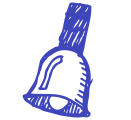



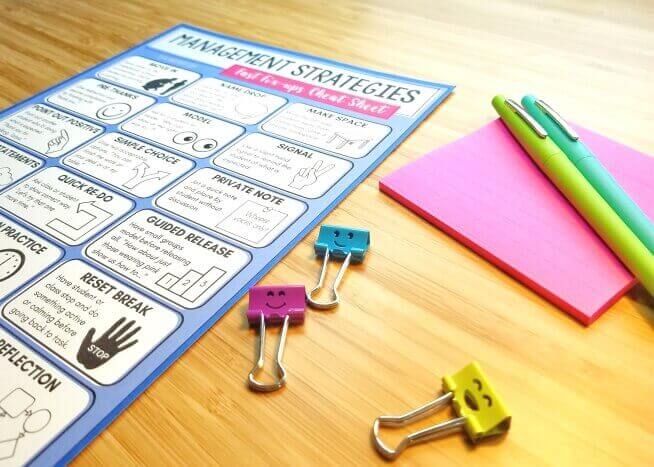
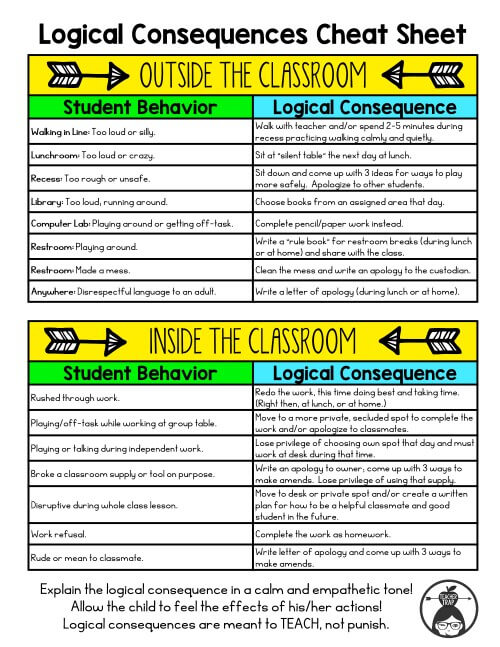
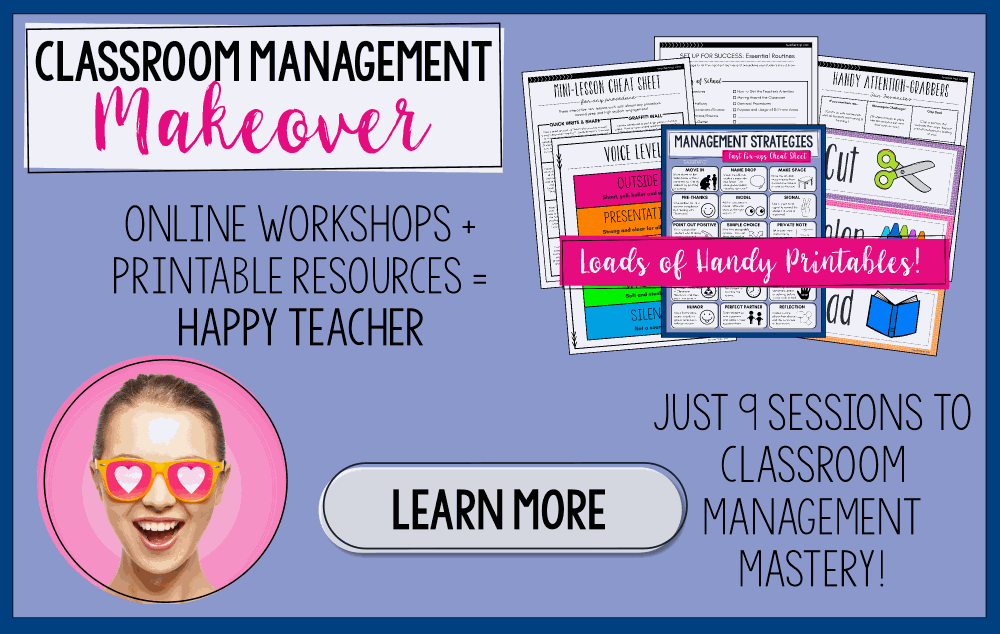

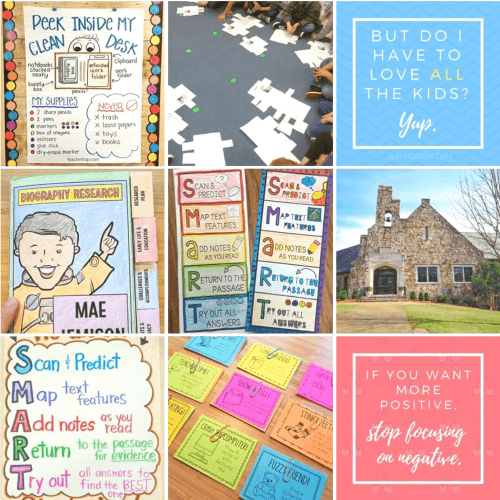
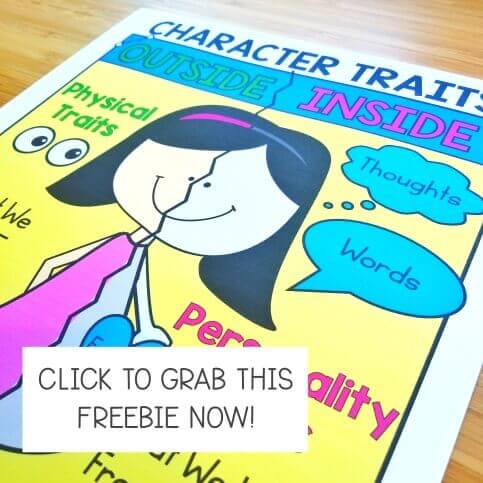
How do I purchase your classroom promise poster? You are amazing! Thank you
Katina (VT)
Hi Katina,
I don’t have the poster for sale but you can use my example as inspiration to draw up your own version! 🙂